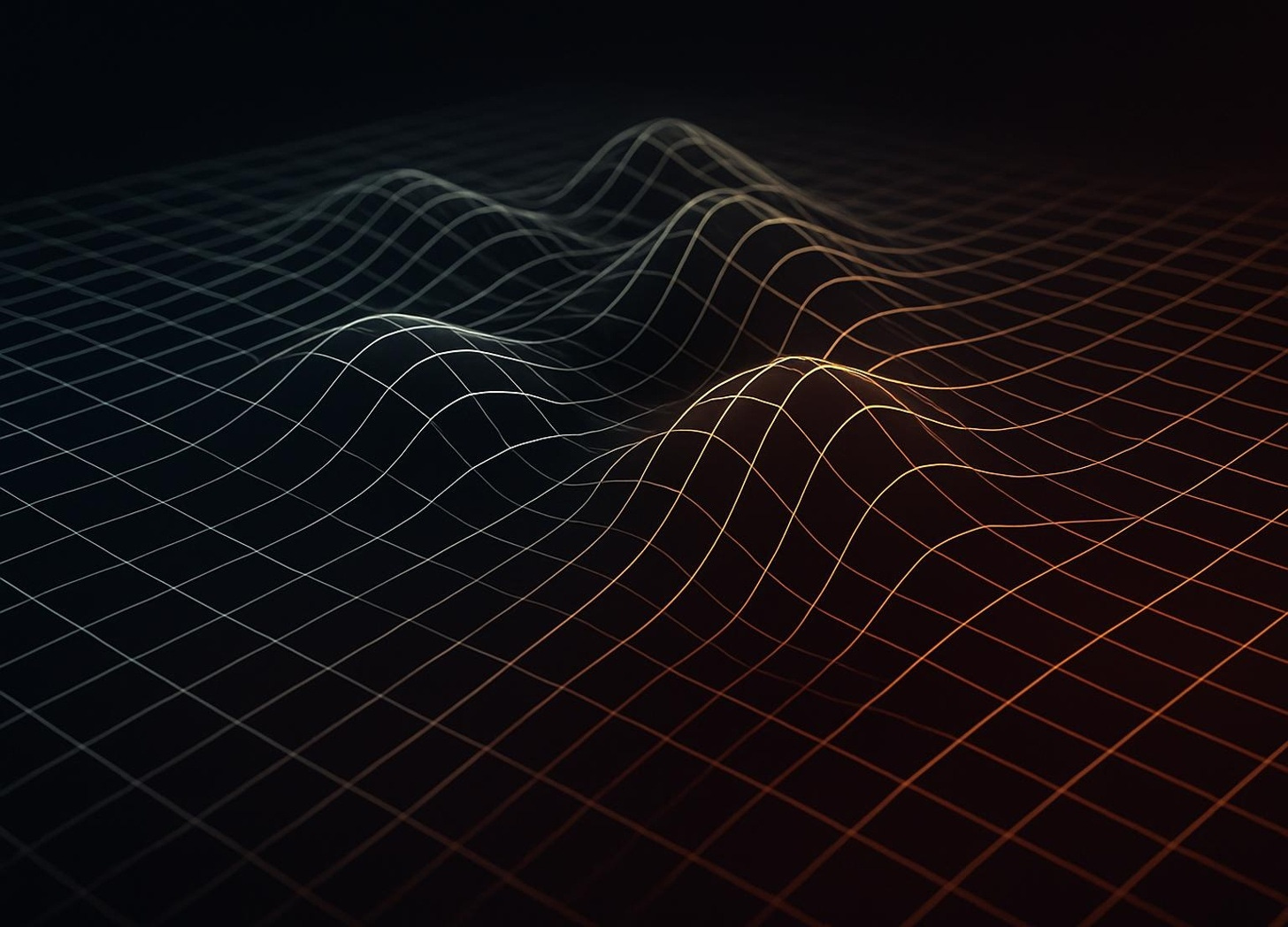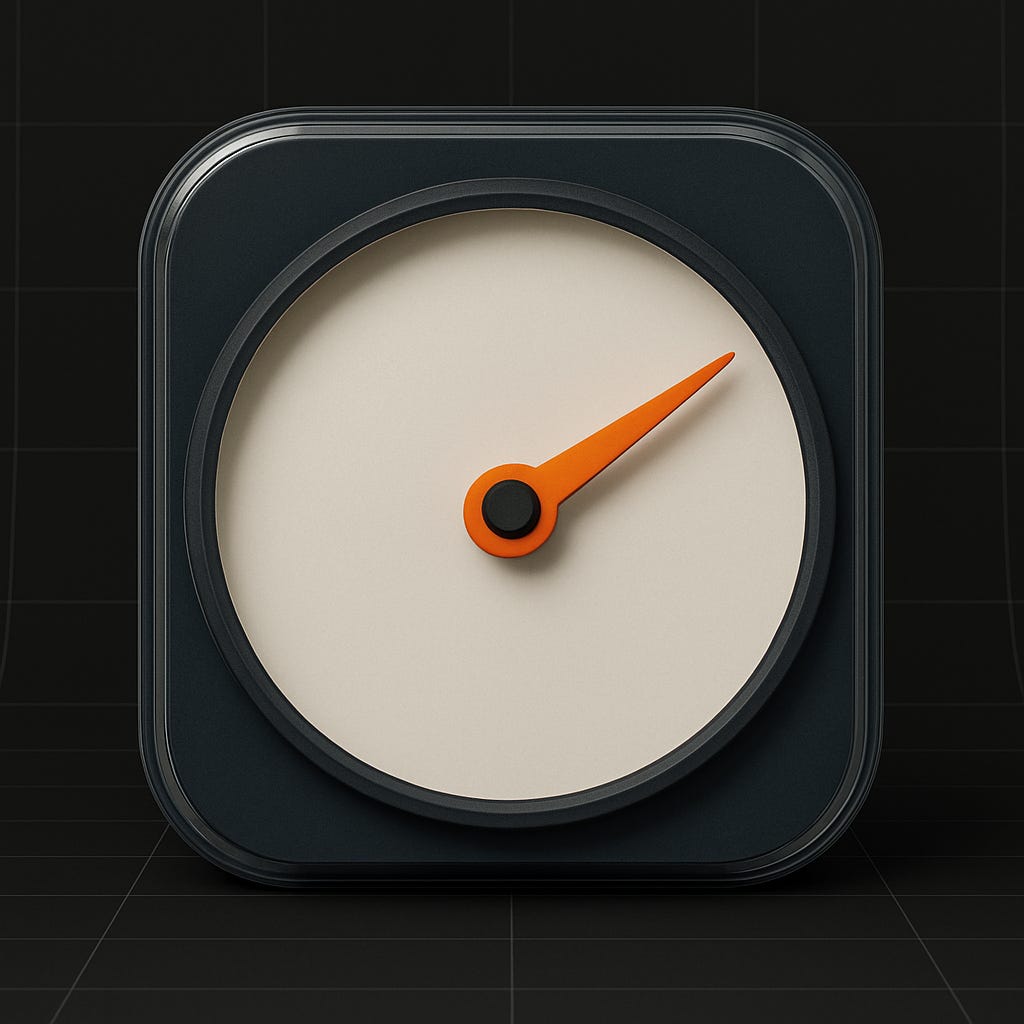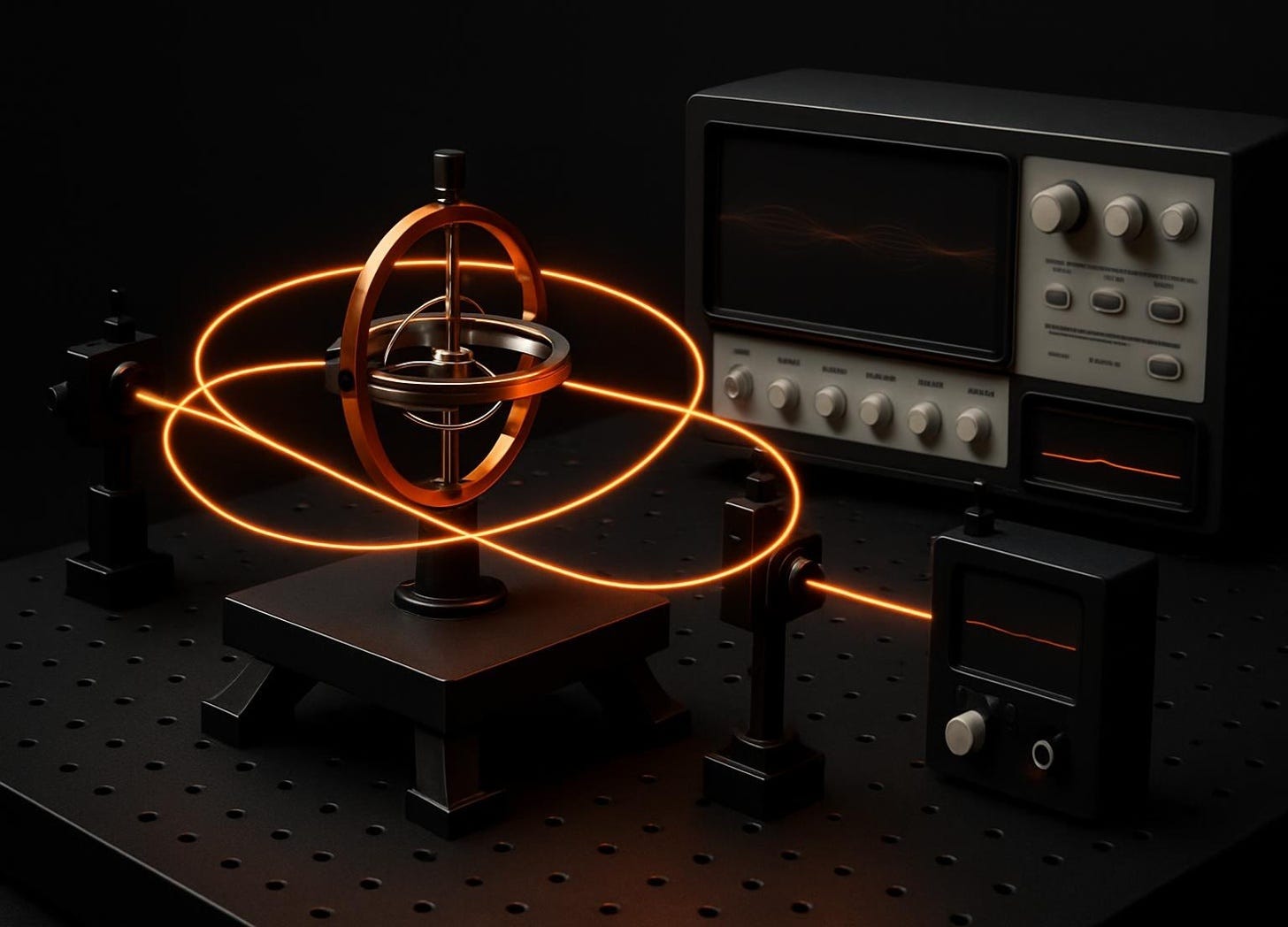Rethinking Time in Physics
Parameter of Change, Field-like Flow, or Phase Dynamics?
🧭 Atomic clocks can drift by 1 nanosecond per day. Cosmic time may flow differently for each observer.
Time is more than a backdrop for change. In mainstream physics, time emerges from spacetime geometry and entropy gradients, while alternative theories propose it as a causal flow or even a product of consciousness. This spectrum of views shapes how science measures, manipulates, and debates the nature of reality.
I treat time as a parameter reconstructed from operational markers: clocks, oscillators, and entropy gradients. Exploring how constructor theory, Kozyrev’s time, Prigogine’s dissipative structures, and Herbert’s chronoflux reinterpret time’s ontological basis, I weigh testable mechanisms, operational criteria, and experimental protocols. The result: a map of where consensus ends and curiosity begins.
👉 Advanced Rediscovery brings you weekly briefings that cut through the noise with curated insights from my 10+ years of research in AI, extended electromagnetism, the quantum vacuum, and information theory.
In today’s briefing
🧠 Mainstream physics sees time as a relational, emergent parameter.
🧩 Alternative models propose time as a causal flow or oscillatory phase.
🔬 Constructor theory sets strict criteria for physical timers.
🌌 Experiments probe energy exchange and vacuum structure.
🤔 The speed of light may depend on local vacuum properties.
Ontological Foundations and Emergent Models of Time in Physics
Mainstream physics treats time as an emergent, relational parameter reconstructed from the order of events and the progression of entropy in closed systems. This approach uses spacetime geometry and thermodynamic gradients to define temporal direction and rate.
Alternative theories, from Kozyrev’s causal time flow to Herbert’s chronoflux, offer richer ontologies. They propose time as a substantial flow, a wave, or even a product of consciousness, challenging the operational focus of standard models.
This visualization shows mainstream and alternative models: time as an emergent parameter, a flow, and a phase, all mapped onto a dynamic spacetime grid.
When I approach time in my own work, I don’t treat it as a substance or a force, but as a parameter used to order change. In quantum theory, time enters equations as a classical, non-measurable variable, while general relativity ties proper time to the path of clocks through spacetime. This operational view means time is reconstructed from what physical systems — clocks and oscillators — report, rather than from an intrinsic temporal entity.
Constructor theory, as developed by David Deutsch and Chiara Marletto, replaces time’s fundamental status with a focus on possible and impossible tasks. Here, duration and dynamics emerge from the capabilities of physical systems to perform timer tasks. Time becomes a bookkeeping device for ordered change, not a fundamental observable.
Alternative models, such as Kozyrev’s time flow and Herbert’s chronoflux, assign time an independent physical reality. Kozyrev claimed time could act as a causal agent, exchanging energy with matter. Herbert linked time’s flow to consciousness and field-like properties. These approaches lack universally accepted mathematical formalism but inspire experiments testing for direct time-matter interactions or consciousness-linked effects.
Dynamic vacuum models, including those by Hal Puthoff, suggest the speed of light is set by the vacuum’s permittivity and permeability, which could vary locally. If true, this would mean spacetime and vacuum structure actively shape observed constants and propagation phenomena. The tired light hypothesis proposes cosmic redshift comes from photons losing energy over distance, not from expanding space. This idea faces contradictions with observed time dilation in supernovae and the cosmic microwave background.
Oscillatory systems, such as atomic clocks, naturally provide phase variables that serve as robust local temporal markers. It's interesting to think that time is an emergent quantification of change, with each system expressing its own cyclical “phase time” within the broader temporal continuum.
“Time is what clocks measure, but clocks themselves are physical systems whose operation emerges from deeper laws.” “What if time is not just a label for change, but a physical field with its own dynamics and energy?”
Time’s ontological status remains contested. Mainstream models favor operational definitions, while alternatives seek deeper mechanisms. The interplay between clocks, vacuum structure, and possible temporal flows keeps the debate open.
Why it matters
🧠 Time emerges from change, not as a thing.
🧩 Alternative models propose time as a flow or field.
🌌 Vacuum properties may shape observed time and light speed.
References [1–7]
Constructor-Theoretic Criteria for High-Quality Timers and Constraints on Emergent Laws
Constructor theory reframes time by focusing on the operational criteria for physical timers. High-quality timers must meet strict standards of accuracy, reliability, and isolation.
These constraints set the limits for emergent differential laws. If timers cannot achieve arbitrary precision, time-dependent equations become fundamentally granular or fuzzy.
A high-quality timer must be isolated, reliable, and capable of marking duration with arbitrary precision or granularity.
Constructor theory defines a high-quality timer as an isolated null constructor with three key attributes: a preparable start (0), a running state (R), and a static completion (1), plus a reliably distinguishable halt flag. These attributes must be organized into strict equivalence classes, so only timers of equal duration can co-halt. This operational rigor ensures that duration is well-defined and robust against tampering.
The quality of a timer depends on the absence of finite bounds on accuracy and reliability. Ideal timers can approach perfect performance, with arbitrarily small errors. Isolation is mandatory: the timer’s evolution and halt flag must be immune to external interventions. Composite-timer protocols, where multiple timers are run and compared, calibrate duration equivalence and check for tampering or environmental effects.
Constructor theory’s deterministic framework defines timer quality using accuracy and reliability metrics, not probabilities. If only discrete durations or finite accuracy are possible, then emergent differential laws become difference equations or have bounded resolution, rather than true differentials. This means the sharpness and validity of time-dependent physical laws are limited by the operational constraints of the best available timers.
“A timer is only as good as its isolation from the world and its ability to repeat its task with perfect reliability.”
Timer quality is not just a technical detail. It shapes the very form of emergent physical laws, setting hard limits on what can be measured, modeled, or predicted.
Why it matters
🔬 High-quality timers need perfect isolation and reliability.
🧠 Timer constraints limit the sharpness of emergent laws.
🧩 Discrete or fuzzy timers force granular dynamics.
References [1]
Experimental Protocols for Probing Temporal Flow and Vacuum Structure Dynamics
Testing claims about time as a physical flow or variable vacuum structure requires rigorous protocols. Modern metrology enables direct, falsifiable experiments probing energy exchange and electromagnetic propagation.
Observable signatures include phase anomalies, refractive index shifts, and environment-dependent electromagnetic effects. Multiple modalities cross-check results and rule out conventional explanations.
Precision experiments can reveal or rule out energy exchange with time flow, and test for spatial or temporal variation in vacuum response.
Experiments probing time flow should use precision gyroscope-based Sagnac interferometry, especially with torsion-like stimuli, to directly test for energy exchange between temporal flow and matter. Null and positive criteria are clearly defined: a stationary gyroscope should not show phase shifts unless a true temporal flow acts. Non-Hermitian gyroscopes near exceptional points amplify frequency splitting, making them highly sensitive to temporal gradients.
Torsion, Sagnac cancellation protocols, and time-dilation measurements beyond gravitational predictions offer orthogonal probes. These can reveal temporal shear effects on matter and clocks. Superconductivity experiments under temporal gradients, and momentum-space vorticity measurements, may uncover modulations linked to chronoflux parameters.
Vacuum fluctuation spectroscopy and cosmic microwave background (CMB) hydrodynamic analysis can detect chronoflux contributions to zero-point energy and cosmological-scale temporal-flow signatures. Laboratory diagnostics for variable vacuum parameters include timing residuals, vacuum birefringence, anomalous propagation impedance, and device performance shifts under controlled environmental conditions. Dynamic Casimir emission and discharge phenomenology provide further observable effects.
“If time flows as a field, precision gyroscopes and electromagnetic diagnostics should reveal its fingerprints.”
Converging evidence from these protocols could validate new physics of time-matter exchange or vacuum structure. Systematic nulls would falsify such claims, keeping the search honest.
Why it matters
🔬 Gyroscope and EM tests probe temporal flow.
🧠 Multiple diagnostics cross-check new physics claims.
🌌 Vacuum structure may be tunable in the lab.
References [8–22]
Final Thoughts
Physics describes time as a parameter for change, rooted in spacetime geometry and entropy gradients. This view assumes that clocks and oscillators provide reliable, operational markers for duration. The facts show that time’s direction and rate, in mainstream models, are not fundamental but emerge from deeper symmetries and constraints.
In my own research, I always question assumptions about the vacuum, the role of information, and the operational limits of measurement. These shape every hypothesis. Alternative theories, like those of Kozyrev or Herbert, suggest time could be a flow or a field, with possible energy exchange or consciousness-linked effects. These ideas remain speculative because formal mechanisms and reproducible evidence are limited.
Hypotheses about locally variable light speed, chronoflux, or phase time push the boundaries of current models. They raise questions about the completeness of existing frameworks and the nature of temporal order. What if new experiments or unified chronometry standards could bridge operational and substantial views of time? The search for answers continues, blending analytic rigor with open questions.
Quick Recap
🧠 Time may emerge from change, not exist as a thing.
🧩 Physical timers must meet strict operational criteria.
🌌 Experiments could reveal new temporal or vacuum effects.
🤔 Alternative theories challenge time’s standard ontology.
👉 Each week you’ll receive one email with ideas, digital material, and tips from my lab. As a PhD engineer, I’ve built the mindset to decode and build upon intricate systems and theories — and I’ll help you do the same.
💡 Share your take on time: Is it a parameter, a flow, or something else entirely? Join the debate and help build a better theory!
🧑🏼 Follow @drxwilhelm on X Twitter, Substack, Medium, TikTok, YouTube
Glossary
Spacetime: The four-dimensional continuum combining three spatial dimensions and one time dimension, forming the setting for relativistic physics.
Entropy Gradient: A difference in entropy (disorder) that defines the direction of time’s arrow in thermodynamics.
Constructor Theory: A framework by Deutsch and Marletto defining physical laws in terms of possible and impossible tasks, including the operational definition of timers.
Kozyrev’s Time: A theory by Nikolai Kozyrev positing time as a physical flow capable of energy exchange with matter.
Chronoflux: A speculative model by Roy D. Herbert suggesting time has a wave-like, field structure linked to consciousness.
Vacuum Permittivity and Permeability: Physical constants describing how the vacuum responds to electric and magnetic fields, determining the speed of light.
Phase Time: The cyclical variable marking the state of an oscillatory system, used as a local measure of duration.
Tired Light Hypothesis: A speculative idea that redshift in light from distant galaxies is due to energy loss over distance, not cosmic expansion.
Null Constructor: In constructor theory, a system that performs a task without net change to itself, used to define ideal timers.
Operationalism: The philosophy that concepts (like time) are defined by the operations or measurements used to observe them.
Sources & References
Deutsch D; Marletto C. Constructor Theory of Time. 2025.
Hooper WJ. New Horizons in Electric, Magnetic and Gravitational Field Theory. 2015.
Bearden TE. Oblivion – America on the Brink. 2005.
Chubykalo A; Espinoza A. The Mathematical Justification of a Possible Wave Nature of the Time Flow of Kozyrev. 2014.
‘t Hooft G. The Cellular Automaton Interpretation of Quantum Mechanics. 2016.
Bearden TE. Excalibur Briefing – Explaining Paranormal Phenomena. 1988.
Forbes A. Hard Truths 5 – Roy D. Herbert’s Unification Dilation Theory [video]. YouTube.
Anonymous PhDs. The Philadelphia Experiment.
Herbert RD. Chronoflux Principia – The Hydrodynamics of Cosmic Time. 2025.
De Carlo M; De Leonardis F; Soref RA; Colatorti L; Passaro VMN. Non-Hermitian Sensing in Photonics and Electronics – A Review.
Bearden TE. The New Tesla Electromagnetics and the Secrets of Electrical Free Energy. 1984.
Bearden TE. Annotated Glossary. 2000.
Froning HD; Barrett TW; Hathaway GD. Experiments Involving Specially Conditioned EM Radiation, Gravitation and Matter. 1998.
Forbes A. Secret Science Wednesday – Lasers [video]. YouTube.
Davis EW; Puthoff HE. On Extracting Energy from the Quantum Vacuum.
Forbes A. UFO Patents Are Real: Reviewing the History of Sal Pais Pat [video]. YouTube.
Froning HD; Barrett TW. Space Coupling by Specially Conditioned Electromagnetic Fields. 1998.
St. Clair JQ. Hyperspace Energy Generator [manuscript].
Forbes A. Avi Loeb: The Science of UFO Technology – Hard Truths [video]. YouTube.
Bearden TE. Background for Pursuing Scalar Electromagnetics. 1992.
Forbes A. Hard Truths Podcast 2 – Bob Greenyer, Ashton Forbes [video]. YouTube.
Forbes A. Zero-Point Energy Podcast Review – Cold Fusion Gravity Man [video]. YouTube.






Wait, so there's a true vacuum now? Voyager 1 has entered the chat. There is an interstellar medium.
Thanks, I’m looking forward to that article. From my perspective as an instrumentation and control engineer, a clock is a useful way to think about how measurement and observation differ. A conventional clock measures time through internal energy exchange, so its rate can vary with materials and environment. It measures energy interactions but does not interpret them.
Light, however, does not carry energy through space; it carries the information about energy. When that information reaches a boundary, it tells the boundary how to respond. Infrared light from the Sun, for example, communicates information that our skin molecules respond to by vibrating faster, and this creates the energy we feel as heat. The light itself is not heating us; it is transferring information that triggers our internal energetic response. The same infrared information can produce different results depending on the receiving boundary. Black surfaces, for instance, respond differently to white ones because they interpret and absorb the information in their own way.
The speed of light is constant because it depends on the balance between the vacuum’s permittivity and permeability. As one changes, the other changes proportionally, so the rate of signal propagation never varies. Light is what signals between boundaries, and that constancy is what separates measurement from signal. Measurements can vary because they depend on physical energy exchange, but the propagation of signals through light does not.
Consciousness can be thought of as the boundary condition that manages internal and external information flows. The brain, particularly the cortex, translates external information received through light into internal representations. Both flows operate at the speed of light, but the internal one is slightly offset because it must be processed and integrated. The observation of external information becomes the energetic feeling of the present moment. That interaction produces new information internally, which flows through the boundaries of our cells to the boundary of the system itself, where it is experienced as feeling or thought.
The inference of information through thought is a higher order, recursive and continuous process, always occurring at the speed of light. In that sense, all observation, whether at the physical boundary level or the higher order cognitive level, depends on the same constant rate of light. Light defines not only the propagation of signals but the continuity of awareness itself, linking the physical, informational, and experiential into one seamless process.
That constancy is also why c appears in all the equations of motion in physics. It is the universal constant that links energy, information, and observation. It's the rate at which every interaction, from the smallest particle to the largest structure, becomes knowable.